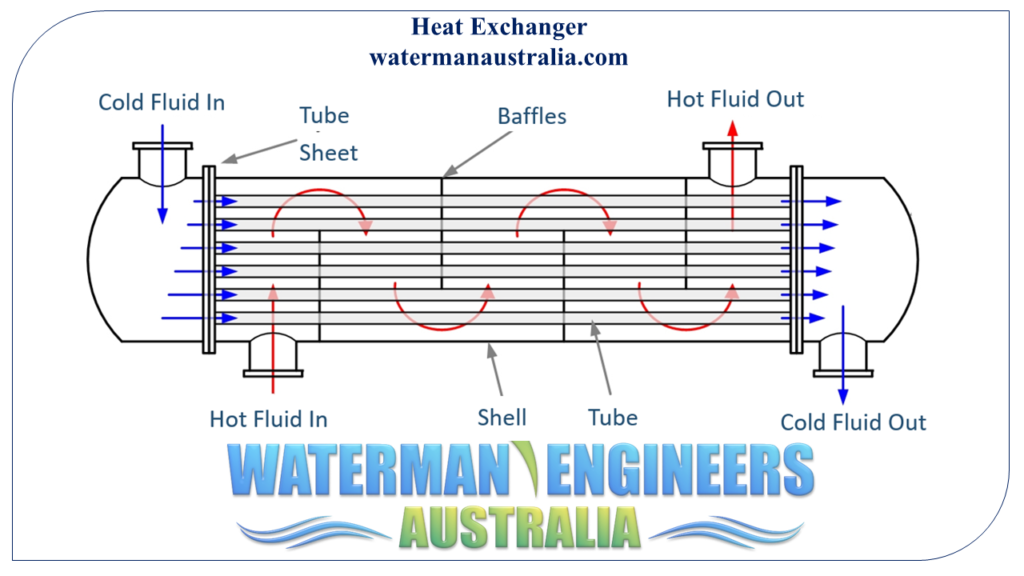
A heat exchanger is a device that allows for the transmission of heat between two different media without any physical contact between them. Heat exchangers work on the idea that thermal energy can be transferred from a hot fluid to a cold fluid. Heat exchangers provide for precise temperature regulation, improving energy efficiency and system functionality by transferring heat between two fluids.
Power plants, chemical plants, HVAC (heating, ventilation, and air conditioning) systems, supermarkets, and many more all employ heat exchangers. They can be found in commonplace home products like air conditioners and water heaters.
In this article, we'll learn about heat exchangers, what they are, how they work, and the different kinds there are. The article also details the common uses and factors to consider when choosing a heat exchanger.
A heat exchanger entails two flowing fluids separated by a stable wall. Heat is transferred from your sizzling fluid towards the wall by convection, throughout the wall by conduction and from the wall on the chilly fluid by convection.
Tube rupture will likely be regarded as an accidental situation. The shell facet really should be protected from the resulting overpressure party. This could be realized in two ways:
Element papers stand for probably the most advanced analysis with considerable possible for top affect in the field. A Element
Drinking water-cooled condensers use water to cool the refrigerant and launch heat. They’re extra efficient than air-cooled variations, but can require more maintenance and is probably not well suited for areas with h2o constraints.
Fuel flames melt away inside these tubes plus the harmful gases are vented in the roof and outside of your private home. A blower motor inside the furnace blows the heated air into your ductwork with the heat exchanger which is circulated through your own home.
Determine 4 shows a standard nozzle in reasonable provider, with reinforcement provided by a reinforcement plate and with a weld neck nozzle flange.
Increasing the heat exchange duty of this type of heat exchanger in a later on date is surprisingly easy by introducing plates within the frame.
Fouling is the deposition of unwanted make any difference over the heat exchange area, which cuts down the heat exchange. This is an incredibly critical parameter of the exchanger style and design. A greater fouling resistance Designing of heat exchanger manufacturer interprets into a minimized heat transfer.
The growth in electricity desire for space cooling is linked to the enhanced utilization of refrigeration devices—air-conditioning—which, Moreover expanding use, also has an effect on peak electricity demand as a result of the simultaneous operation of air conditioners at full capacity throughout warm times.
Frequent cross-part of quite prolonged fins and fins with insulated guidelines, the fin efficiency may be expressed as
In the event of large pressure, e.g., in-line waste heat boiler including the just one used in Claus models, the thickness on the tubesheet is calculated making use of ASME I as an alternative to ASME VIII to reduce the thickness. ASME I considers which the tubesheet is stayed through the tubes, which isn't the case of ASME VIII.
To put it briefly, the gasoline valve controls the gas that enters a furnace, such as shutting it off when There's a failure with a safety swap.
The Shell and Tube, the Air Cooled plus the Plate-sort Exchanger would be the 3 most commonly applied forms of exchangers in the chemical and course of action industries. With growing effort and hard work in recent times to lessen excess weight and dimensions and improve effectiveness, other sorts of exchangers are increasingly utilised.
The use of the tactic is Plainly facilitated by understanding of the hot and cold fluid inlet and outlet temperatures.